Spectre Tile Set
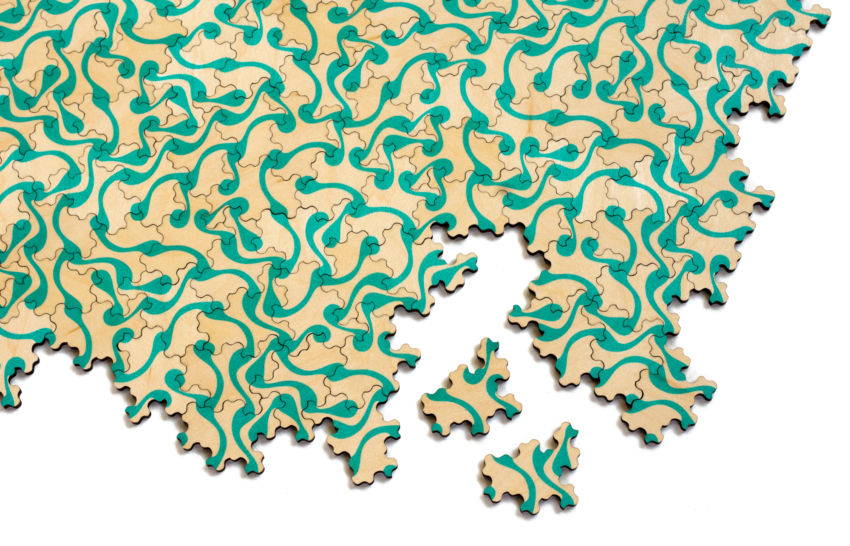
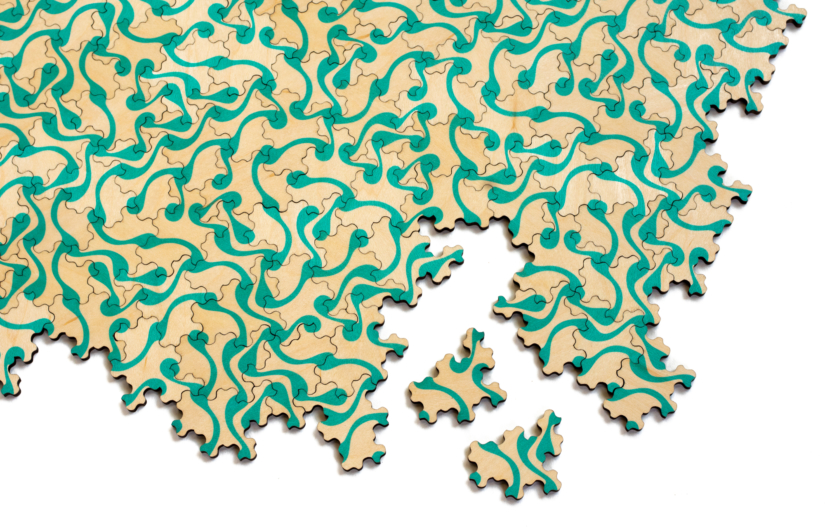
The Spectre Puzzle is a wooden puzzle and mathematical toy consisting of identically shaped pieces which tile in a unique way that never repeats. It is based on a recent mathematical discovery, the Spectre tile which answered a long-standing mathematical mystery: does a so-called “einstein” exist? That is an aperiodic monotile, a single shape which tiles the plane but never makes the same pattern twice. Seems impossible? Now you can play with the mind bending shape and discover how it works.
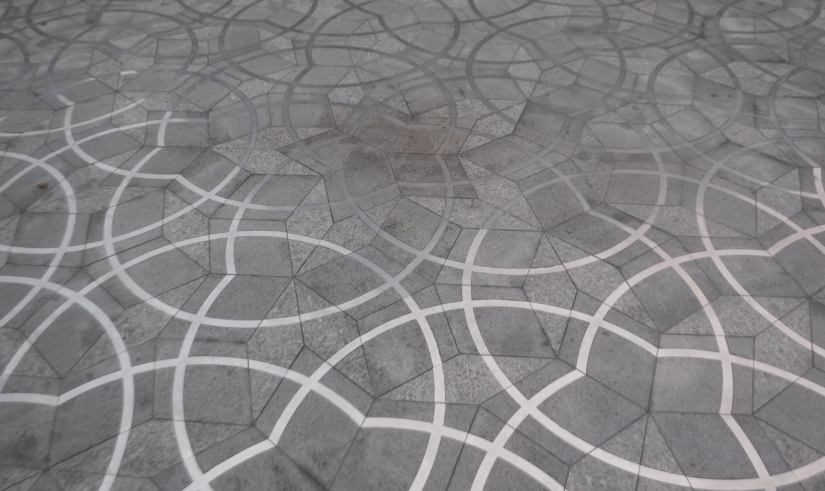
A regular tiling shape, like a hexagon you might use in a bathroom, creates the same pattern over and over. An aperiodic tiling can still fill your bathroom, but the same pattern never appears twice. Perhaps the most famous aperiodic tilings are Penrose tiles, discovered by Roger Penrose in the 1970s. This tiling is made of 2 different rhombus tiles. However, it falls short of the sought after aperiodic monotile in two ways. First, it is made of 2 separate shapes. Second, it admits periodic tiling, meaning while it can be assembled without repeating it can also be assembled in a repeating pattern. The Spectre tile is the first single shape which not only can tile aperiodically, but it is impossible to tile in a repeating manner.
The Spectre Puzzle is a set of 111 wooden tiles with two different truchet type patterns printed on them. The Spectre tile is actually an infinite family of shapes that attach or interlock in a certain way. We’ve made a version of the Spectre tile which has curvy, interlocking edges instead of straight edges for better puzzling. While the tiles never repeat, there aren’t exactly infinite ways to assemble the puzzle. There are specific rules you have to follow in order to tile endlessly, otherwise you can hit dead ends that leave unfillable gaps. You can assemble the puzzle as you like or try to figure out the rules to make an infinite tile. By having two different patterns on the tiles, we also enable a little bit of creativity in the assembly. You can assemble your infinite tiling with multiple types of pattern by mixing the two types. If you prefer your puzzle to be patternless, flip the pieces over to construct a plain wood version.
The Spectre Puzzle is now available in our shop in two colors: black and teal. Each set has 111 wooden tiles and costs $70.
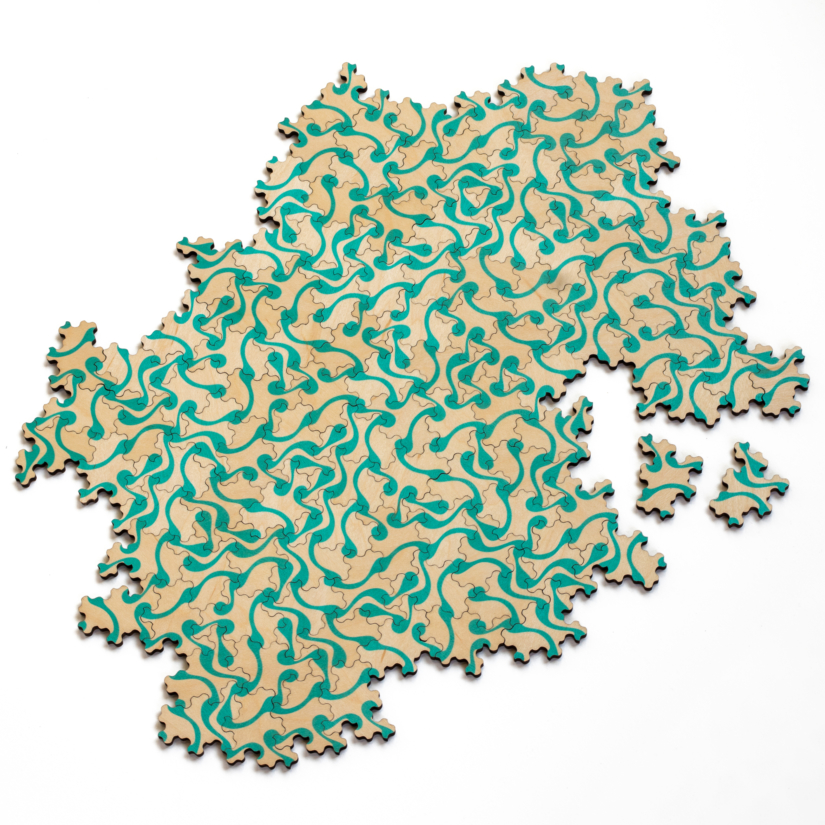
History and Credits


Image credit: Hat Tile (left) and Spectre Tile (right) by David Smith, Joseph Samuel Myers, Craig S. Kaplan, and Chaim Goodman-Strauss, 2023
David Smith, Joseph Samuel Myers, Craig S. Kaplan, and Chaim Goodman-Strauss first published the discovery of an aperiodic monotile on March 20, 2023. This tile was not the Spectre tile. This was dubbed the “hat” tile, and its discovery was lauded and quickly made the mainstream news, a rare feat for pure mathematics. However, some were slightly dissatisfied, because the tiling actually required reflections or flipping over tiles. Therefore in some ways it was actually two shapes not one. This is not simply mathematical frippery, it is actually key to fabricating a puzzle. Because if you print a pattern on one side of the puzzle, it won’t work. The tiles must be flipped when assembling, so sometimes you would end up with the image side down. Alternatively an image could be printed on both sides, and the pattern would need to be precisely aligned on the front and back sides: a much more difficult manufacturing process. So we were delighted when the same team announced the “Spectre” on May 28, an aperiodic monotile that does not require reflections.



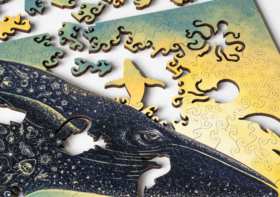
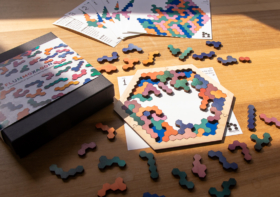
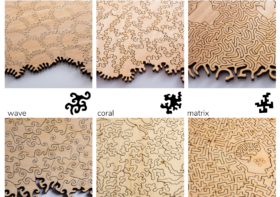
Lee Doolan
> An aperiodic tiling can still fill your bathroom, but the same pattern never appears twice.
That depends on what you mean by “appears twice.” Here’s a fact: in an infinite aperiodic tiling, you can pick up any patch, however large, and find a match for it somewhere else in the tiling.
Esornep
I do hope you ship them in a single stack inside a tube, given they’re all the same shape.